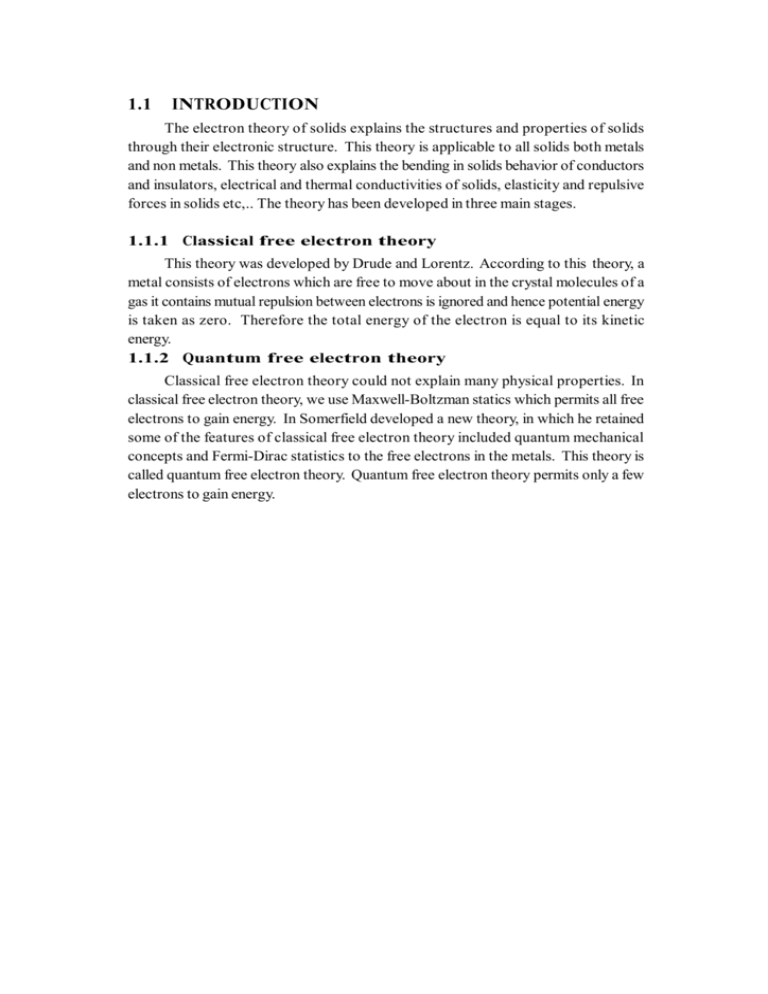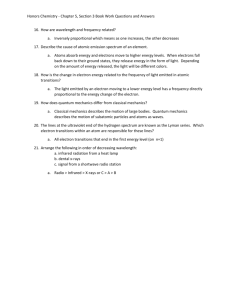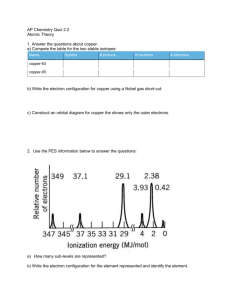(postulates) of classical free electron theory
advertisement

1.1 INTRODUCTION The electron theory of solids explains the structures and properties of solids through their electronic structure. This theory is applicable to all solids both metals and non metals. This theory also explains the bending in solids behavior of conductors and insulators, electrical and thermal conductivities of solids, elasticity and repulsive forces in solids etc,.. The theory has been developed in three main stages. 1.1.1 Classical free electron theory This theory was developed by Drude and Lorentz. According to this theory, a metal consists of electrons which are free to move about in the crystal molecules of a gas it contains mutual repulsion between electrons is ignored and hence potential energy is taken as zero. Therefore the total energy of the electron is equal to its kinetic energy. 1.1.2 Quantum free electron theory Classical free electron theory could not explain many physical properties. In classical free electron theory, we use Maxwell-Boltzman statics which permits all free electrons to gain energy. In Somerfield developed a new theory, in which he retained some of the features of classical free electron theory included quantum mechanical concepts and Fermi-Dirac statistics to the free electrons in the metals. This theory is called quantum free electron theory. Quantum free electron theory permits only a few electrons to gain energy. 1.2 ENGINEERING PHYSICS - II 1.1.3 Zone theory (or) Band theory Bloch developed the theory in which the electrons move in a periodic field provided by the Lattice concept of holes, origin of Band gap and effective mass of electrons are the special features of this theory of solids. This theory also explains the mechanism of super conductivity based on band theory. 1.2 ASSUMPTIONS (POSTULATES) OF CLASSICAL FREE ELECTRON THEORY 1. A Solid metal has nucleus with revolving electrons. The electrons move freely like molecules in a gas. 2. The free electrons move in a uniform potential field due to the ions fixed in the lattice. 3. In the absence of electric field (E=0), the free electrons move in random directions and collide with each other. During this collision no loss of energy is observes since the collisions are elastic as shown in figure. 4. When the presence of electric field ( E 0 ) the free electrons are accelerated in the direction opposite to the direction of applied electric field, as shown in figure. Fig1.1 Absence of electric field (E= 0) Presence of electric field ( E 0 ) 5. Since the electrons are assumed to be perfect gas, they obey the laws of classical theory of gases. 6. Classical free electrons in the metal obey Maxwell-Boltzmann statistics. CONDUCTING MATERIALS 1.3 1.3 BASIC TERMS INVOLVED IN THE FREE ELECTRON THEORY 1. Drift Velocity (V d) The drift velocity is defined as the average velocity acquired by the free electron in particular direction, due to the applied electric field. Average distance travelled by the electron Time taken Drift Velocity = Vd ms 1 t 2. Mobility () The mobility is defined as the drift velocity (V d) acquired by the electron per unit electric field (E). Vd 2 1 1 m V s E 3. Mean free path () The average distance travelled by a electron between two successive collision is called mean free path. 4. Mean collision time (c) (or) Collision time It is the time taken by the free electron between two successive collision. c sec Vd 5. Relaxation time () It is the time taken by the electron to reach equilibrium position from disturbed position in the presence of electric field. l sec Vd Where l is the distance travelled by the electron. The value of relaxation time is of the order of 10–14 sec. 6. Band gap (Eg) Band gap is the energy difference between the minimum energy of conduction band and the maximum energy of valence band. 7. Current density (J) It is defined as the current per unit area of cross section of an imaginary plane holded normal to the direction of the flow of current in a current carrying conductor. CONDUCTING MATERIALS 1.3 J I A m –2 A








